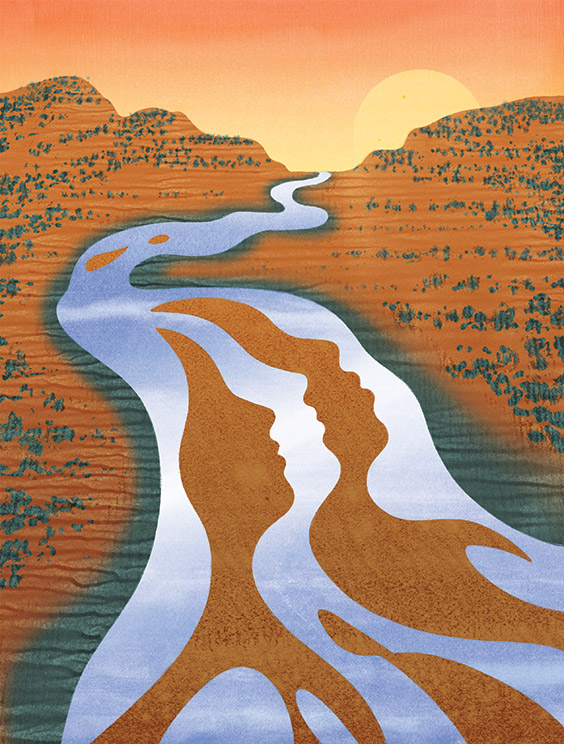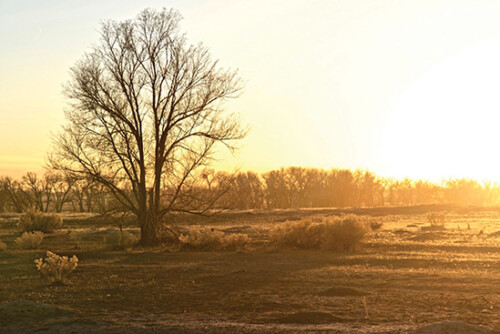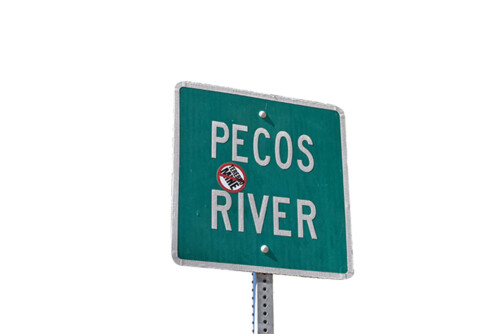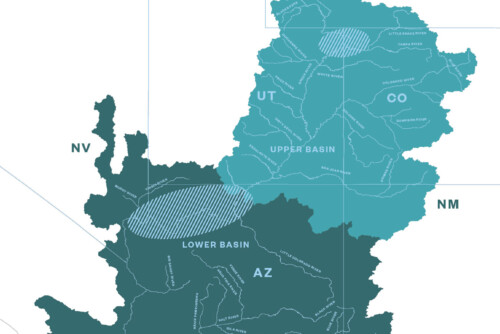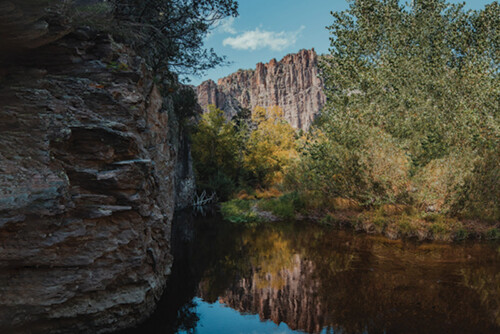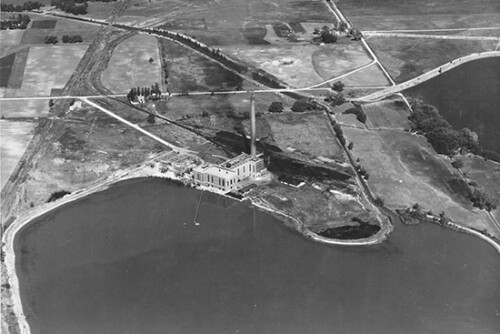Header Photo Caption: A small stream in rural Arizona, where water users such as farmers and ranchers could leverage the new law for the benefit of the river.
The pace of change in the water world is often described as glacial. Water laws and regulations in the West are outdated, developed over the past 150 years or so, when supply typically kept pace with demand and the primary aim was to divert water from rivers. Relationships and agreements among water users, institutionalized over decades to favor consumption over conservation, are hard to modify to protect threatened and endangered rivers.
It might seem strange that laws that govern our water use in the arid West can discourage water conservation, but it is true. While those specific laws and policies might have made sense when they were created, they are not sustainable in the face of growing populations and climate change, which are putting further stress on our region’s rivers and streams.
Arizona has taken a first step toward finding a new balance.
Unsustainable “Use It or Lose It”
Law Gets an Upgrade
“USE IT OR LOSE IT” is the premise of laws that say if you don’t use all or some of your water rights for a period of time, you can lose them so someone else can put them to a beneficial use, such as irrigating crops. Far from making every drop count, those water laws disincentivize wise water use and hamper innovation that would help stretch limited water supplies and protect rivers.
Under “use it or lose it” law, a surface water right may, in some instances, be forfeited after five years of nonuse. That led to uncertainty and a perceived risk for farmers and ranchers wanting to use less water while still holding on to their valuable water rights. The limited flexibility discouraged water users from modernizing irrigation systems and engaging in conservation practices that keep more water in rivers.
The new law, HB21-2056, was signed by Arizona Governor Doug Ducey in February 2021. It allows water users to voluntarily divert less river water onto their property through efficiency and conservation measures for up to 10 years without forfeiting or abandoning their water rights. Water users must file a water conservation plan with the Arizona Department of Water Resources. By allowing water users to divert less water onto individual properties, Arizona’s revised law can help keep more water in local rivers and streams, benefiting people, watersheds, and wildlife, while also improving water security in one of the driest states in the country.
Arizona’s revised law can help keep more water in local rivers and streams, benefiting people, watersheds, and wildlife…
Conserving water and supporting healthy rivers should be rewarded, not punished. While Arizona was slower than other Western states to improve flexibility in water management, this measure adds to a growing list of conservation methods as examples for other states in the Colorado River Basin. For example, Colorado and New Mexico have passed revisions to their “use it or lose it” laws that address fallowing irrigated lands. Arizona’s law expands protection to a much wider range of conservation activities beyond fallowing. It includes improving irrigation efficiencies, crop shifting, and infrastructure improvements such as lining canals and installing automatic head gates.
This model of encouraging and rewarding conservation needs to be expanded across the West and the Colorado River Basin as water demand outstrips supply. Climate change will make our region hotter and drier, so we need to seize opportunities like this to make water management more flexible to support our increasingly stressed rivers.
WRA, along with our partners, played a critical role in shaping Arizona’s new anti-forfeiture measure. We spent several years working with stakeholders, legislators, and others to craft the forward-thinking law, and our approach paid off: The bill received strong bipartisan support and a rare unanimous vote in the Arizona Senate. But our work is far from done, and we need to move faster to address growing water challenges that threaten the health of rivers and streams in the West before time runs out.
Commonsense water solutions can unite us and protect the rivers that embody the West. State-level leadership on conservation remains essential, and we cannot slow down. As a trusted thought leader, WRA is making progress in state legislatures and with state agencies across our region to protect our treasured rivers, streams, and watersheds. That is a positive change worth celebrating.
